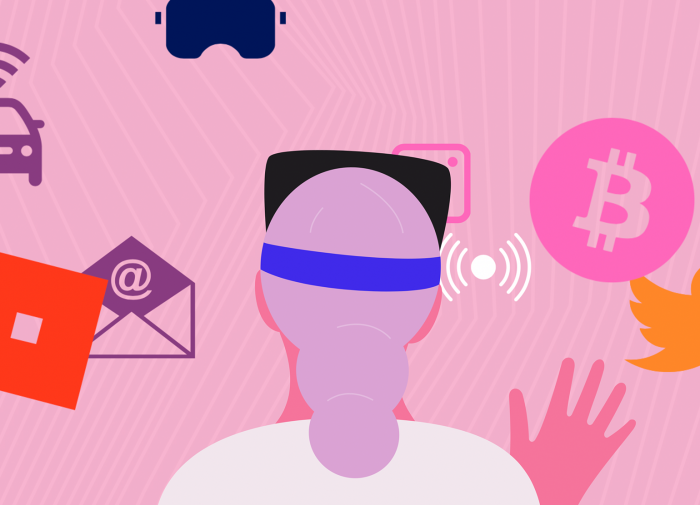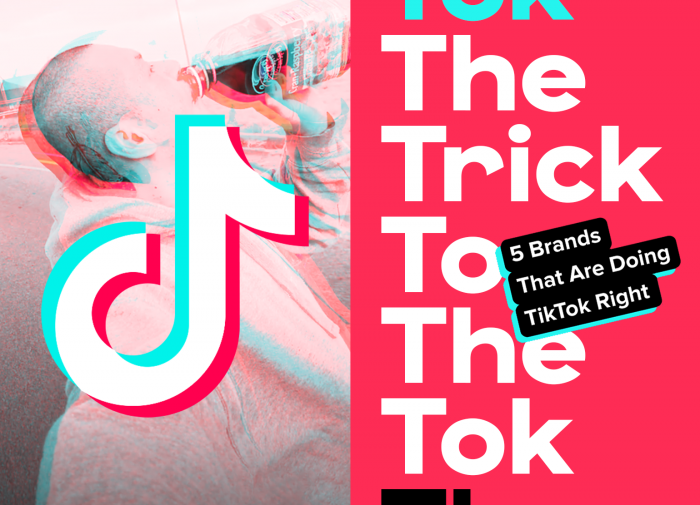From the metaverse to memes to Brand Twitter and video game-exclusive merchandising, creative marketing is changing faster with each passing year. But as our digital lives and IRL existence continue to converge, there are also more and more ways to reach new audiences without getting lost in the mix.
What lies ahead in 2022? Amid the rise of new technologies and shifting norms altering the platforms we use each day, here are five trends set to shake things up.
Hello, AI-Powered Influencers
The influencer industry marches on, but it’s not quite business as usual. Gone are the days of relying on just a big name or high follower counts to build a brand’s name. Today, digital marketers are taking a more calculated, audience-specific approach—one that could be aided by AI, or artificial intelligence.
Why the change? It’s due in part to the fact that the impact of high-powered influencers is diminishing. A recent study revealed that “mega-influencers”—that is, Instagram users whose feeds reach between 100,000 and a million people—have seen their rates of engagement decrease by nearly 10% in the last two years. Changing Instagram algorithms as well as shakeups in the way content is distributed on the platform (more stories, less grid) means it’s back to the drawing board for marketers in the new year.
All of this brings us to the intersection of AI and influencers. Utilizing AI to analyze huge swaths of account data, posts, and follower metrics allows companies to find influencers who match up with their target demographic—even if the influencer in question doesn’t reach the “mega” status. Through latching on to a niche—and having the right public partner to back it up—marketers could see their content stick without getting lost in the void of the endless scroll.
A farewell to cookies?
In early 2020, Google announced that it was rolling back—and eventually doing away with—third-party cookies. Soon after, Apple followed suit for its Safari browser. With the curtain nearly closing, it’s time to understand what a new year without third-party cookies might look like.
Third-party cookies track you on a website but are stored under another domain, facilitating the movement of targeted ads from one site to the next. In the past, they’ve been a huge—albeit often imprecise—data collection tool. Now, however, Google is finally electing to phase them out due to growing privacy concerns and legislative measures like the EU’s General Data Protection Regulation (GDPR).
For marketers, there’s a silver lining. Transitioning from third-party cookies to first-party cookies could ultimately offer a more sustainable engagement tool. By creating unique user experiences that help gather first-party data, creative teams can get more relevant insights about their audience’s preferences and tackle the new year with confidence, not a creeping fear that their ad data might simply vanish.
A focus on interactive, personalized content
Sometimes, a marketing campaign is so good that you nearly forget it’s actually a marketing campaign.
For example, ‘Spotify Wrapped,’ the streaming platform’s interactive year-end recap, is almost too perfect not to share. Why? In part, because it’s a piece of content made for you and you only—an increasingly vital piece of the puzzle to drive real engagement.
Personalized digital experiences help bring interfaces to life and meld the digital with our real lives. For digital marketers, 2022 brings an exciting set of possibilities for humanizing the digital, from VR and unique user data to hybrid events in the metaverse.
To understand the benefits of a highly personalized, interactive campaign, it’s worth looking once again at Spotify. Following the release of ‘Wrapped’ last year, the platform saw a 21% increase in mobile app downloads in the weeks surrounding its release.
Show me the money (eventually)
Sensible financing programs are all the rage, at least if you’ve been paying attention to TikTok.
A year-plus of online-centric shopping has shifted habits in both finding products and paying for them. And, especially among Gen Z, an unlikely viral trend has sprung up: Buy now, pay later (BNPL). In the US, the percentage of Gen Z shoppers using BNPL hit 36% in 2020, up from just 6% in the previous year, while rates for Millennials doubled.
These days, installment plans and BNPL programs are expanding far beyond the big purchases associated with layaway in the past. Where marketing is concerned, it’s not just a checkout page phenomenon. Using influencers, sponsored content, and by blending in with #BuyNowPayLater on TikTok (a tag with over 14 million views), payment plans are themselves an attention-grabbing force.
So if you hear a catchy soundbite praising a new wave of personal finance, perhaps to the tune of a Taylor Swift song, don’t be too surprised.
New channels to drive web traffic
The almighty first page of Google has been, for many, the gold standard of relevance for digital content. Now, another feature is helping web pages shine.
Zero-click search is a system that highlights information at the top of a query without the need to enter a different website. Google selects the snippets that answer a search, and features them directly in the browser; that’s why, if you search ‘art supplies near me,’ you’ll see reviews and directions all without entering a new domain.
Understanding the rise of the zero-click search’s importance is key, whether creative marketers are excited about it or not. Between January and December of last year, more than two-thirds of Google searches resulted in users getting their answers without changing domains. But getting to the top of the top on Google is no small task—the challenge, then, comes in finding new ways to stick out.
2022 will likely see brands adapting to a digital environment in which search engine results are just one piece of the pie. By doubling down on content that reaches users through newsletters, interactive campaigns, or even by implementing hybrid events, creative marketers can stay on the cutting edge and make impressions that count.



